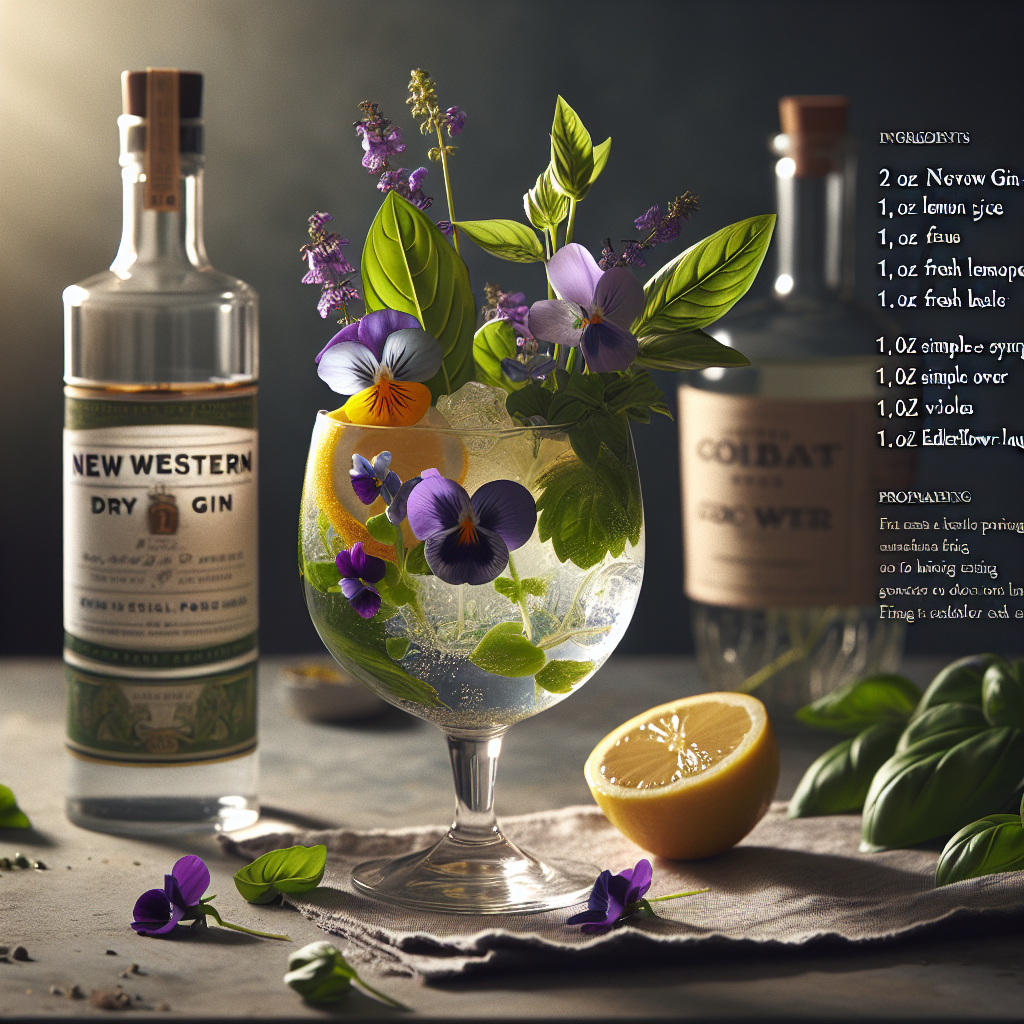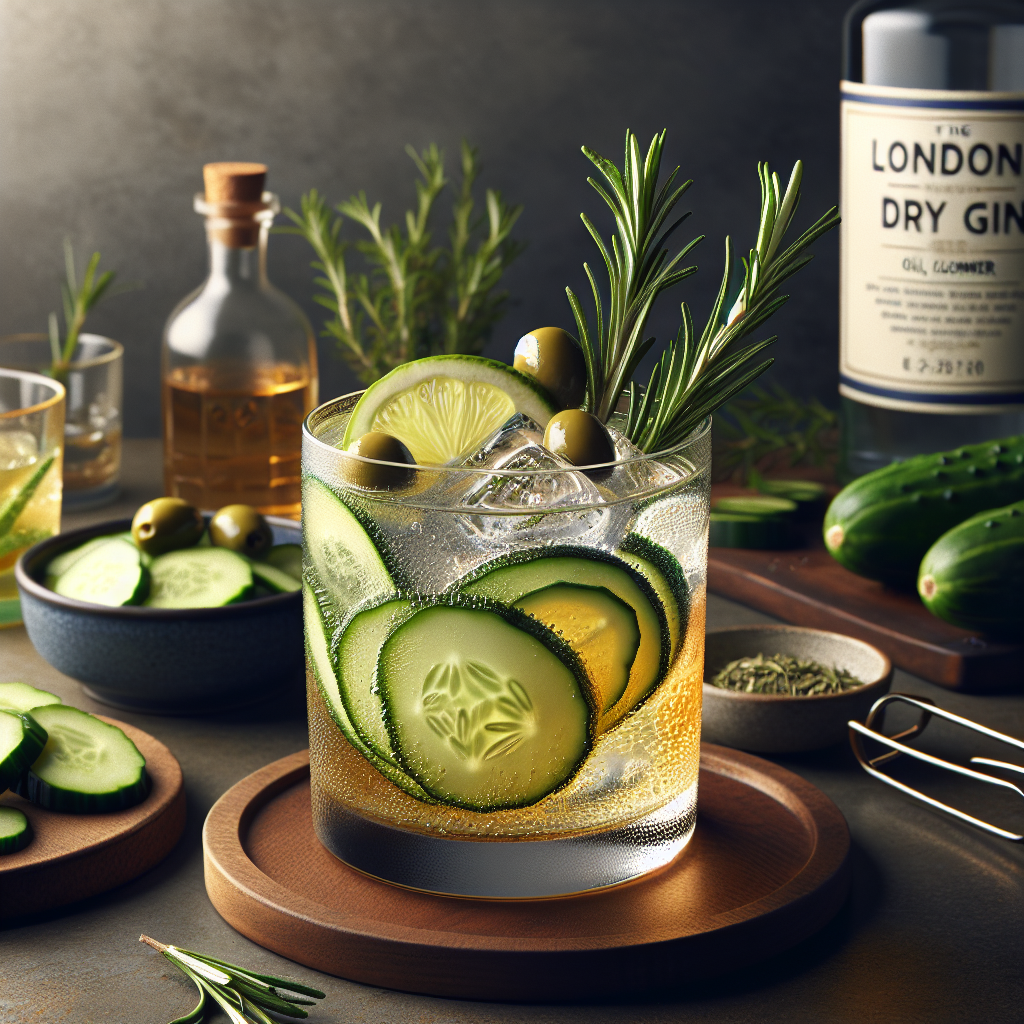Mastering the Art of Gin Cocktails

Mastering the Art of Gin Cocktails
Gin, with its botanical complexity, has long been a cornerstone of the cocktail world. From its origins in the 17th century to its modern-day resurgence, gin's versatility makes it a favorite among mixologists and cocktail enthusiasts alike. In this post, we'll explore the myriad ways to use gin in cocktails, delve into its flavor profiles, and share some innovative recipes that highlight its unique qualities.
The History of Gin
Gin's journey began in the Netherlands in the 17th century, where it was known as "genever," a distilled spirit flavored with juniper berries. It quickly spread to England, where it became the drink of the masses during the "Gin Craze" of the early 18th century. Over time, gin evolved from a rough, medicinal spirit to a refined, sophisticated one, with London Dry Gin becoming the standard.
Today, gin's popularity has surged, thanks to the craft distilling movement and the introduction of new styles like New Western Dry Gin, which experiment with non-traditional botanicals. This resurgence has opened up a world of possibilities for cocktail creation.
Understanding Gin's Flavor Profile
Gin's distinctive taste comes from its botanicals, with juniper being the most prominent. However, the flavor profile can vary widely depending on the other botanicals used. Common ones include:
- Citrus (lemon, orange, grapefruit)
- Spices (coriander, cardamom, cinnamon)
- Herbs (angelica root, orris root, basil)
- Flowers (lavender, rose, elderflower)
Understanding these flavor components is crucial when crafting cocktails, as they can be paired with other ingredients to create harmonious or contrasting flavors.
Classic Gin Cocktails
Before we dive into more innovative recipes, let's pay homage to some classic gin cocktails. These drinks not only showcase gin's versatility but also provide a foundation for further exploration.
The Martini
The Martini, arguably the most iconic gin cocktail, has a storied history. While its origins are debated, one popular story attributes its creation to a bartender at the Knickerbocker Hotel in New York in the early 20th century. The classic recipe is simple yet elegant:
- 2.5 oz London Dry Gin
- 0.5 oz Dry Vermouth
- Lemon twist or olive for garnish
Stir the gin and vermouth with ice, strain into a chilled martini glass, and garnish as preferred. The Martini's simplicity allows the gin's botanicals to shine, making it a perfect starting point for any gin enthusiast.
The Negroni
The Negroni, created in Florence, Italy, in 1919 by Count Camillo Negroni, is another classic that showcases gin's versatility. The recipe is as follows:
- 1 oz Gin
- 1 oz Sweet Vermouth
- 1 oz Campari
- Orange peel for garnish
Stir the ingredients with ice, strain into a rocks glass over a large ice cube, and garnish with an orange peel. The Negroni's bitter and sweet notes complement gin's botanicals beautifully.
Innovative Gin Cocktails
Now, let's explore some more innovative ways to use gin in cocktails. These recipes incorporate culinary elements and push the boundaries of traditional mixology.
The Garden Party
This cocktail celebrates the herbal and floral notes of gin, making it perfect for a summer gathering. The drink is inspired by the concept of using fresh, seasonal ingredients in cocktails, a technique I've learned from my studies in culinary arts.
The Garden Party

A refreshing cocktail that celebrates the herbal and floral notes of gin, perfect for a summer gathering.
Ingredients:
- 2 oz New Western Dry Gin
- 1 oz Fresh Lemon Juice
- 0.5 oz Simple Syrup
- 0.5 oz Elderflower Liqueur
- 4-5 Fresh Basil Leaves
- 2-3 Edible Flowers (such as violets or pansies)
- Soda Water to top
- Lemon Twist for garnish
Instructions:
- In a cocktail shaker, muddle the basil leaves with the simple syrup.
- Add the gin, lemon juice, and elderflower liqueur to the shaker.
- Fill the shaker with ice and shake until well chilled.
- Strain into a highball glass filled with ice.
- Top with soda water and garnish with edible flowers and a lemon twist.
The Savory Sipper
This cocktail takes inspiration from culinary techniques, incorporating savory elements to create a unique flavor profile. The drink is a testament to the idea that cocktails can be as complex and nuanced as any dish.
The Savory Sipper

A cocktail that incorporates savory elements for a unique and complex flavor profile.
Ingredients:
- 2 oz London Dry Gin
- 0.75 oz Fresh Lime Juice
- 0.5 oz Simple Syrup
- 0.5 oz Cucumber Juice
- 1 tsp Olive Brine
- 3-4 Fresh Rosemary Sprigs
- Cucumber Slice and Rosemary Sprig for garnish
Instructions:
- In a cocktail shaker, muddle the rosemary sprigs with the simple syrup.
- Add the gin, lime juice, cucumber juice, and olive brine to the shaker.
- Fill the shaker with ice and shake until well chilled.
- Double strain into a chilled coupe glass.
- Garnish with a cucumber slice and a rosemary sprig.
Techniques for Using Gin in Cocktails
Understanding the best techniques for using gin in cocktails can elevate your drink-making skills. Here are some key tips:
Balancing Flavors
Gin's botanical profile can be overwhelming if not balanced correctly. When crafting cocktails, consider the following:
- Acidity: Use citrus juices like lemon or lime to cut through the botanicals.
- Sweetness: Simple syrup or fruit liqueurs can balance the bitterness of gin.
- Bitterness: Ingredients like Campari or bitters can enhance gin's complexity.
Infusions and Muddling
Infusing gin with additional flavors can add a new dimension to your cocktails. For example, infusing gin with citrus peels, herbs, or spices can create a unique base spirit. Muddling fresh ingredients like fruits and herbs directly with gin can also extract their flavors, adding freshness to your drink.
Shaking vs. Stirring
The choice between shaking and stirring your cocktail can affect the final taste and texture. Shaking is ideal for cocktails with citrus juice or other mixers, as it helps to chill and dilute the drink while aerating it. Stirring is better for spirit-forward cocktails, like the Martini, as it maintains a smoother texture and less dilution.
Pairing Gin Cocktails with Food
Gin cocktails can be a delightful accompaniment to a variety of dishes. Here are some pairing suggestions:
- The Garden Party: Pairs well with light, summery dishes like salads, grilled fish, or vegetable-based appetizers. The floral and herbal notes complement the freshness of these foods.
- The Savory Sipper: This cocktail is a great match for Mediterranean cuisine, such as bruschetta, tapas, or pasta dishes with olive oil and herbs. The savory elements in the drink enhance the flavors of these dishes.
Conclusion
Gin's versatility makes it an exciting spirit to work with in cocktails. Whether you're crafting a classic Martini, experimenting with new flavors in The Garden Party, or exploring savory profiles with The Savory Sipper, gin offers endless possibilities. By understanding its flavor profile and employing various techniques, you can create drinks that are both complex and accessible. So, grab your favorite bottle of gin and start mixing – the world of gin cocktails is yours to explore.
Remember, the key to a great cocktail is balance and creativity. And if all else fails, a well-made Martini is always a safe bet. Cheers!